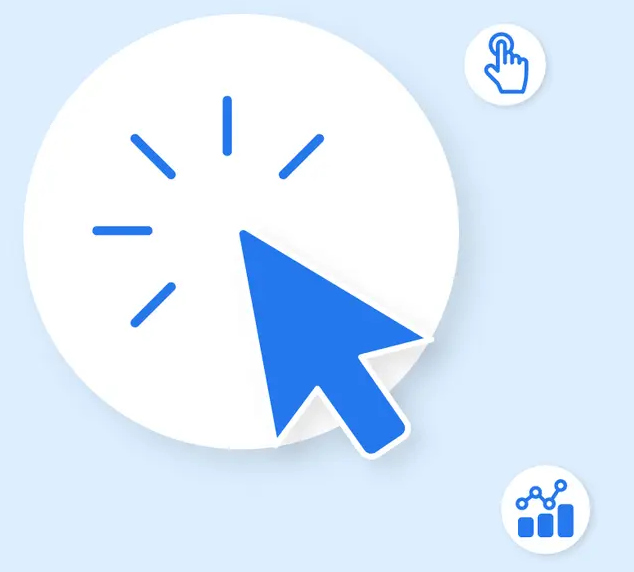Paid Advertising is valuable for small business because it allows small businesses to create ads and start bringing in leads immediately while their organic efforts sprout. With PPC ads taking only a few hours to be approved, targeted traffic will see your brand much faster much faster, initiating the lead generation process quickly. Paid Search Advertising for small businesses is flexible. With today’s data, modifications to campaigns, made in response to user behavior, can be fluid and will maximize the opportunity for results.
Of course, the best benefit of PPC marketing is the targeting options available. Google’s goal is to target users attributes such as keyword, location, gender, age and device, to name a few. With targeting, campaigns that will only target users with the highest chance of converting.
Best PPC Strategies for Small Business
Bid on Competitor’s Brand Names
Copy Your Competitors’ Keywords
Search for some of your keywords and see which competitors appear on the results page. Review their messaging they’re using and the calls to action they are pushing in their ads. Click through to their site and have a look at their landing page. Look at the website’s general design, the content that is on it, and how the tactics they use to get sales or leads. See what is working and copy it for yourself.

Likewise, using tools such as SEMRush, enter your competitor’s website and find out the top keywords they are bidding on. Run your own adverts on these identical keywords and you will be in direct competition with your competitors. And if your competitor is bigger than your business, focus on their secondary keywords and begin to attack their marketshare from a smaller starting point.
Launch "Value" Ads
There’s no point spending money on Google Ads, just to flash your brands logo. If people don’t see the value to click on your ad, then it is a waste of budget. The average click-through rate can range from 2% to 6%. Since click-through rates have an impact on your quality score and sales, making sure your click-through rate is as high as possible makes a big difference.
Ads need to be focused on your brand’s value to that prospect and stand out from your competitors. Ads that are straight to the point and include valuable offers such as warranties, free trials, or money-back guarantees engages the prospect. Look at your competitor’s ads or other Google Ads for inspiration and to help differentiate your brand.
Keep Your Budget in Check
Start slow with you ad spend until tendencies start to appear. Google Ads let you set daily budgets which means once you reach your daily budget, your ads will be paused for the day keeping you from going over budget and visible the entire month. Once you have a successful campaign that is generating leads, you can start to increase your budget. By following this simple strategy of having a daily budget, you’ll be able to get the most out of PPC marketing without wasting all your money in a day.
Get Google's Free Advertising Coupon
Google offers free advertising credit to new advertisers. The amount offered can change, but Google usually gives a useful free credits to new advertisers based on your ad spend. You can find out how much free advertising credit Google Ads is offering by going on Google’s Coupon Support Page.
To get Google coupons, sign in to your Google Ads account and under “Billing,” select “Promotions”. You’ll see all promotional codes added to your Google Ads account and the related amounts and statuses, including the following: “Active: Reward associated with coupon has been granted”. Free advertising coupons should automatically be applied to a Google Ads advertiser’s account.
Don’t Bid for Position One
As a smaller business competing with larger companies, you don’t have the same budget as your larger competitors. The bigger competitors can afford to pay much higher click prices. Larger businesses are always on the lookout for more traffic which means they’re more willing to test increasing bids to appear on a high position on the page.
As a smaller business, you need to have a different mindset to a larger business advertising on paid search. Rather than trying to dominate the top of the page where it is very competitive, you may be able to get a better return by targeting a lower position on the page.
For example, if you have a budget of $500 and need to bid $2 to appear on position one, you would be able to buy 250 clicks for the budget. If you drop bids to $1, you would appear lower down the page but you would be able to buy 500 clicks for the budget.
As long as you don’t reduce your bids too low, you will be able to get more clicks by dropping the bids. Let the bigger businesses fight it out for position one. You can focus on getting traffic from the less competitive positions lower on the page.
Target Long-Tail Keywords
According to Google, 15% of searches are new every day. This means that there is a lot of long-tail traffic to be picked up, which has less competition than your short terms because everyone has already thought of bidding on them. If you target keywords with less competition, you will likely have to bid less to appear on the top results. Having lower click prices means you can buy more traffic for the budget.
Work on Your Quality Score
With smaller budgets if you can improve your keywords’ Quality Score, it will bring down click prices in order to get more clicks for the budget. The amount you pay for a click depends on your Ad Rank. Your Ad Rank is calculated using the amount that your bid and the Quality Score of your keyword. Google uses three metrics to calculate your Quality Scores:
- Expected Clickthrough rate – The likelihood that your ad will get a click compared to other competitors in the auction.
- Landing Page Experience – The quality of your landing page. This includes having relevant content on the page and a very fast loading time. Find out more about improving your Landing Page Experience.
- Ad Relevance – How well your ad copy matches the keyword.
Each of the above metrics gets a score of either ‘Above Average’, ‘Average’, or ‘Below Average’.
To find the scores of your keywords, in the keyword view, click on ‘Columns’ on the right-hand side and then on ‘Modify Columns’. This will give you a list of all the columns that you can add to Google Ads.
Under the ‘Quality Score’ subheading, select ‘Quality Score’, ‘Exp. CTR’, ‘Landing page exp.’ and ‘Ad relevance’. You should now have all the metrics you need to see how you can go about improving the Quality Score of each of your keywords. Start by tackling all the metrics where you have a ‘Below Average’ score.
Use Manual Bidding
Automated bidding uses Google’s machine learning capabilities to bid the right amount for each search. And a lot of businesses have seen performance improvements when they switch to automated bidding. However, automated bidding has a learning phase when the system is testing and learning what works well and what doesn’t. Consequently, it is possible to initially see poor returns on your ad spend.
The amount of time a campaign is in the learning phase will depend on how much traffic the campaign is getting. If a campaign has a large budget and gets a lot of traffic, then the learning phase may be over in a few days. If the budget is small and the campaign isn’t getting a lot of traffic, it will take longer to get enough traffic to get out of the learning phase. However you can use manual bidding and manually set the bids to what you think is right which will give Google time to analyze your campaigns while you control your spend.
Protect Your Brand from Click Fraud
It’s no secret that the world of PPC is exceptionally competitive. Thousands of businesses bid on the same keywords at the same time, and everyone wants to be number one. This can lead to some shady tactics, which include competitors clicking on your ads. By clicking on your ads, you’ll still incur the charge for the click, but not the lead. Imagine your competitor doing this to you every single day, your monthly ad spend will quickly be exhausted.
It’s crucial you protect your brand by using click fraud detection software such as ClickCease. Not only will the software monitor all your ad’s clicks, but it will also automatically block fraudulent users from seeing your ads in the future.
Use the Right Tools
It can become incredibly tedious to manually manage your PPC campaigns once you are budgeting thousands of dollars a month. However, there are PPC automation tools that will save hours of optimization and adjustments. Tools like WordStream helps automate repetitive processes and provides a range of suggestions to help optimize your ads.
With a range of automated features, you’ll save hours managing PPC campaigns by making sense of Google Ads reports in order to reduce the money spent on low converting keywords and maximizing the high converting keywords.
Wrapping up
Does PPC still work for small businesses? Yes, but only if you craft the right PPC advertising strategy and run high-quality, targeted PPC campaigns. The upside is that a small business has the luxury of being able to copy much larger businesses that spend thousands on testing and improving their PPC advertising and landing pages. Use the tips identified in this blog post to give your small business an advantage over other small businesses when doing paid search advertising with Google Ads.




